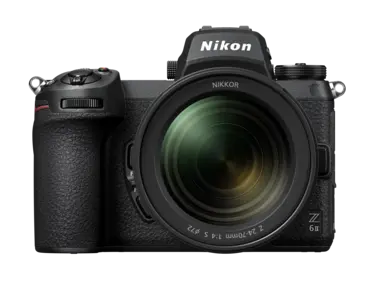Essential composition techniques

A primer on photographic composition
Have you ever taken a photo and felt it wasn’t quite right? You can’t put your finger on it – the image just feels off, somehow. If you answered yes, you’re not alone. The problem may be in your composition.
The role of composition in photography
American landscape photographer Ansel Adams famously said, “You don’t take a photograph, you make it”, and composition is the art of putting a photograph together.
If you want a short and sweet definition, composition is how the elements are arranged in a photograph. What the photographer chooses to include, what they leave out and how the elements of an image appear in the frame are all part of composition.
The photographic community has created multiple ‘rules’ over the years, some of which you’ve probably heard of before, such as the rule of thirds, leading lines and negative space. We’ll review the more prevalent rules of composition here and explain how they can improve your photography.
Balance
A balanced image is pleasing to the eye and happens when everything in a photograph has equal visual ‘weight’. Balance doesn’t necessarily mean complete symmetry. Rather, the placement of elements in the frame should counter each other in a way that makes sense.
A single spot of colour in a field of white could be balanced. A person could be balanced out by negative space in the frame. It all depends on your subject and what you’re trying to convey.
This portrait below balances the subject and dark area at the bottom of the frame with negative space and light at the top. The subject is centred and the railing behind her further divides the image into sections the eye can digest as it moves upward through the image.


Leading lines
Leading lines do what it says on the tin: they lead the viewer’s eye to the subject. These lines can occur in nature or be man-made. What matters is how you use them. Railings, doorways, and walking paths can all be leading lines.
The photo above uses the lines of the bookshelves and support beams to lead our eye to the subject. They also frame him and help emphasise the subject.
Centring the subject and the rule of thirds
Centring your subject creates symmetry. It subconsciously lets the viewer know what the subject of your photograph is and, if you have the subject take up most of the frame, it removes distractions. You’ll often see portraits use this technique.
The rule of thirds divides the frame into a grid and aligns the image elements within the boxes of that grid or on the corners. When photographing people, you’ll usually see their heads arranged in the centre box, giving their features the most visual weight in the image.
The photo below centres the subject and has her head in the middle box of the grid, automatically focusing the viewer’s attention. The ducting and stair rails are also leading lines.


Patterns and textures
Repeating patterns and textures can create visual interest and make for interesting abstractions of everyday objects. Our brains are pattern recognition machines, so we’re drawn to patterns in the world around us.
This image of a downtown skyscraper above is a good example of a repeating pattern with the many tiny squares formed by its windows.
Filling the frame
You don’t always have to show the entire object in your image. You can focus on a pattern or texture present in your subject this way, or let the viewer see interesting details they wouldn’t normally be able to make out. Filling the frame with your subject focuses the eye on it completely and can be used to hint at something beyond the frame.
Below, I’ve filled the frame with just a coffee cup and the top of a wooden table. It forces the viewer to focus on the image’s shapes, colours and textures, such as the bubbles in the coffee.


Using depth and focus for visual interest
Where you place your subject is another way to create visual interest. Including out-of-focus elements in the background and/or foreground creates depth and can help guide people’s attention through the photograph.
In the photo above, the out-of-focus foreground creates dimension and naturally makes the eye wander toward the brighter spots in the photo and the subject, the DeLorean car. The screen in the background adds three-dimensionality.
Use this guide as a starting point
There are anywhere between seven and 30 rules of composition, depending on where you look. But they aren’t hard and fast rules. They’re more like guidelines you can use to become familiar enough with how a photo works to creatively bend or break them.
None of these guidelines is one size fits all. Filling the frame with a portrait subject may look strange if you use the wrong focal length. But including just someone’s arm and hand could create an interesting balance and sense of intrigue.
As with just about everything in photography, play around and find what fits. When you’re confident enough in your grasp of composition, change it up and start bending the rules.
More in Camera 101s
Featured products
Better photography starts here

Unlock greater creativity











